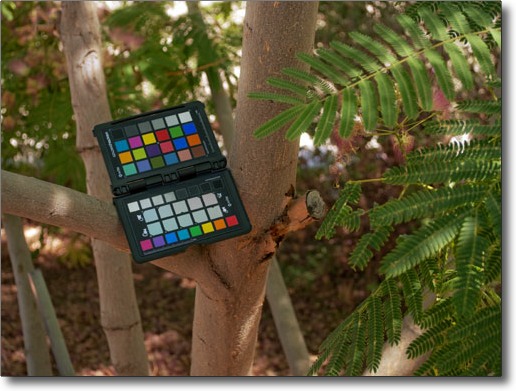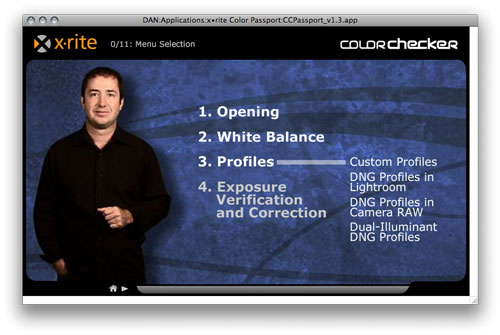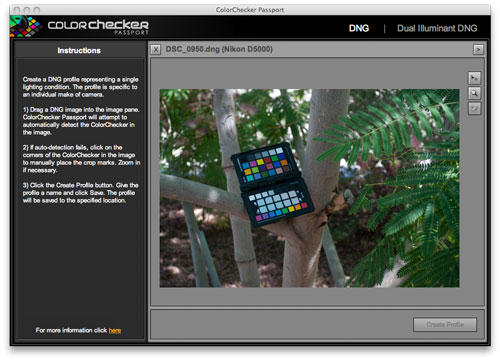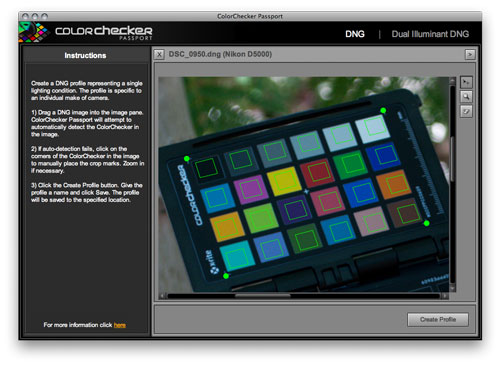X-Rite ColorChecker Passport
Company: X-Rite
Price: MSRP $99.00 U.S.
Many photographers down the years have tried to bring order and discipline to their work. American readers may be familiar with Ansel Adams and his Zone System. In the UK, mountain photographer W.A. Poucher even suggested there might be a standard combination of film, aperture, and shutter speed instead of changing those values for every shot. Poucher, a perfume and cosmetics scientist by trade, went so far as to list the best routes and viewpoints for well known mountain peaks, and  that brought him a wide readership in the post-WWII world of expanding interest in outdoor recreation. All that was required was to follow the Poucher formula, then wait for the right light. You knew there had to be a catch!
That was when the world was seen only in monochrome, and recorded on film processed in chemical baths. Now the world is seen in millions of colors, and recorded digitally. Let us face the awful truth: buy almost any of the popular digital cameras, set it to auto, and your success rate, on average scenes on days with average lighting, will be high. So why spend time and money on products like the X-Rite ColorChecker Passport? If you are an average person then you probably will not, but if you seek to get better overall results, and especially if you want to work under more challenging conditions, you will want to know if this product is a way to achieve your goals. Have you ever met an average person, in an average scene, under average lighting conditions? If you have, please send in the pictures.
Out of the box the X-Rite ColorChecker Passport is a pocketable, or at least bagable, three leaved book-form target containing color and greyscale patches. The configuration allows the target to be held by a subject, or stood in a scene using its own structure. Simple but effective. The accompanying CD contains software for generating color profiles from pictures taken of the target. That’s about it, except that if you have never been down this road before you are approaching what Andrew S. Grove, Intel Corporation’s third employee, has called a ‘strategic inflection point’. Deferring to the military analysts out there, one might repurpose the term as ‘tactical inflection point’.
LEARNING THE ROPES
The first task for this review was to download from the X-Rite website the latest version of the software, the additional profile management software, and the training video. It took around an hour to watch the video: it is not as long as that, but stopping, rewinding, and rerunning was necessary because the information comes thick and fast. However, the presentation was articulate, easy to follow, and given in everyday language, so full marks. Visit the website for other interesting webinars and support material. It seems almost churlish to wish there had been a printed Getting Started leaflet in the box.
SHOOTING THE TARGET (badly placed in green shade under the albizzia trees)
If you can hand on heart say your computer monitor is properly calibrated then skip this paragraph. If not, you are working at a severe disadvantage for doing any serious digital color image work. It might be a good idea for the vendors to require proof of ownership of monitor calibration hardware before agreeing to sell this product to potential buyers! Seriously, consider making the investment in such equipment as part of your overall plan.
MANUALLY IDENTIFYING THE COLOR PATCHES (usually done automatically)
Raw file format users have the most to gain from this product. However, even for shooting only in the JPEG file format there are some advantages to be gained, and the training video clearly explains that this will only be achieved by setting the camera’s own internal white balance profile. In the field, all that is required is to take a shot of the target every time the lighting conditions change. You knew there had to be a catch!
MANAGING THE AVAILABLE PROFILES (‘mimosa’ for this session)
Back at the computer, the software is used to build a profile for all the shots grouped by the same lighting conditions. Then your preferred digital image manipulation software (Lightroom and Photoshop feature in the training video) is used to produce the required end result. The target has three modes: White Balance for creating custom profiles for use in the camera and determining correct exposure parameters; Classic for balancing to a standard datum; Creative for achieving specific effects, although not those whacky newbie abominations. Normally, the white balance and exposure mode would be used with the camera in the field, and the images of other two used on the computer with pixel editing software.
THE RESULTS (screen JPEG only, but a definite improvement)

X-Rite ColorChecker Passport is not a silver bullet product, nor is it a magic wand for transforming bad pictures into award winning pictures. Those who take time and effort to incorporate its use into their workflow will be the ones who reap the most benefit. Consider making a commitment to the product in which the purchase cost is the least significant item on your list.
Having said that, a competent user with two pictures, one the subject and the other including the same scene with an X-Rite ColorChecker Passport target included in the frame, will always outperform the results achieved without the availability of a picture including the target. So even if used casually and intermittently, the X-Rite ColorChecker Passport might be another tool that the aspiring master photographer could use to obtain better results. The price is reasonable in the marketplace for such products, but each individual must decide for themselves if it is value for money for their particular circumstances.






